Composite Deck Dreams: Step-by-Step Guide
Composite Deck Dreams: A Step-by-Step Guide to Building Your Outdoor Oasis
Building a deck is a significant undertaking, transforming your backyard from an ordinary space into a stunning outdoor haven. But the choice of decking material is crucial. Composite decking has rapidly gained popularity, offering a compelling blend of aesthetics, durability, and low-maintenance appeal. This comprehensive guide will walk you through each stage of building a composite deck, from initial planning to the final finishing touches, allowing you to realize your composite deck dreams.
I. Planning & Design: Laying the Foundation for Your Dream Deck
Before you even think about purchasing materials, meticulous planning is paramount. This stage sets the tone for the entire project, ensuring a smooth and successful build.
A. Assessing Your Space & Needs:
-
Site Analysis: Begin by thoroughly evaluating your backyard. Consider factors like:
- Space Availability: Measure the area where you intend to build your deck, accounting for any obstacles like trees, utility lines, or existing structures.
- Sunlight & Shade: Note how much sun and shade the proposed deck area receives throughout the day. This influences your choice of composite decking color and the placement of furniture.
- Slope & Drainage: A level surface is ideal. Consider the natural slope of your yard and how drainage will be managed to prevent water accumulation. You may need to adjust the grade for optimal drainage.
- Access & Accessibility: Ensure easy access to the construction site and consider accessibility needs for all who will use the deck.
-
Deck Design & Size: Sketch your ideal deck layout. Consider the following:
- Deck Size & Shape: Determine the dimensions and shape of your deck. Keep in mind local building codes and the available space.
- Deck Height: Decide on the height of the deck relative to your house and the surrounding ground level.
- Features & Amenities: Plan for any features you desire, such as built-in seating, stairs, railings, lighting, and a pergola or awning. These additions significantly impact the overall design and budget.
- Materials & Style: Choose your composite decking material, color, and style. Consider the overall aesthetic you want to achieve and how it complements your home's style.
-
Budgeting & Material Estimation:
- Detailed Cost Breakdown: Create a detailed budget that includes all materials (composite decking boards, joists, fasteners, railings, posts, etc.), labor costs (if hiring professionals), permits, and any additional features.
- Material Quantity Calculation: Based on your design, accurately calculate the amount of composite decking boards, joists, and other materials needed. Factor in extra material for cuts and potential waste.
B. Permits & Regulations:
Navigating local building codes and obtaining necessary permits is essential to avoid potential legal issues and ensure your deck's safety and structural integrity.
- Check Local Codes: Contact your local building department to understand the specific regulations regarding deck construction in your area. This includes height restrictions, setbacks from property lines, and requirements for railings and structural elements.
- Submit Plans & Applications: Prepare detailed plans of your deck design, including dimensions, materials, and construction methods. Submit these plans along with the necessary application forms to the building department to obtain the required permits.
II. Materials & Tools: Gathering Your Arsenal
With your design finalized and permits secured, it's time to acquire the necessary materials and tools. The quality of your materials directly impacts the longevity and aesthetics of your composite deck.
A. Choosing Your Composite Decking:
The market offers a wide variety of composite decking options, each with its own unique properties and price point.
- Material Composition: Understand the composition of the composite decking. Most consist of a blend of recycled plastic and wood fibers, offering superior durability compared to traditional wood. Look for high-density composite with a capped surface for enhanced resistance to fading, staining, and scratching.
- Color & Style: Select a color and style that aligns with your personal preference and complements your home's architectural style. Consider the overall aesthetic you're aiming for – modern, rustic, traditional, etc.
- Board Width & Length: Choose board dimensions that suit your design and provide a visually appealing result. Wider boards can create a more spacious feel, while narrower boards offer a more traditional look.
- Warranty & Durability: Examine the manufacturer's warranty and consider the decking's resistance to fading, moisture, and insects. A longer warranty often indicates higher quality and durability.
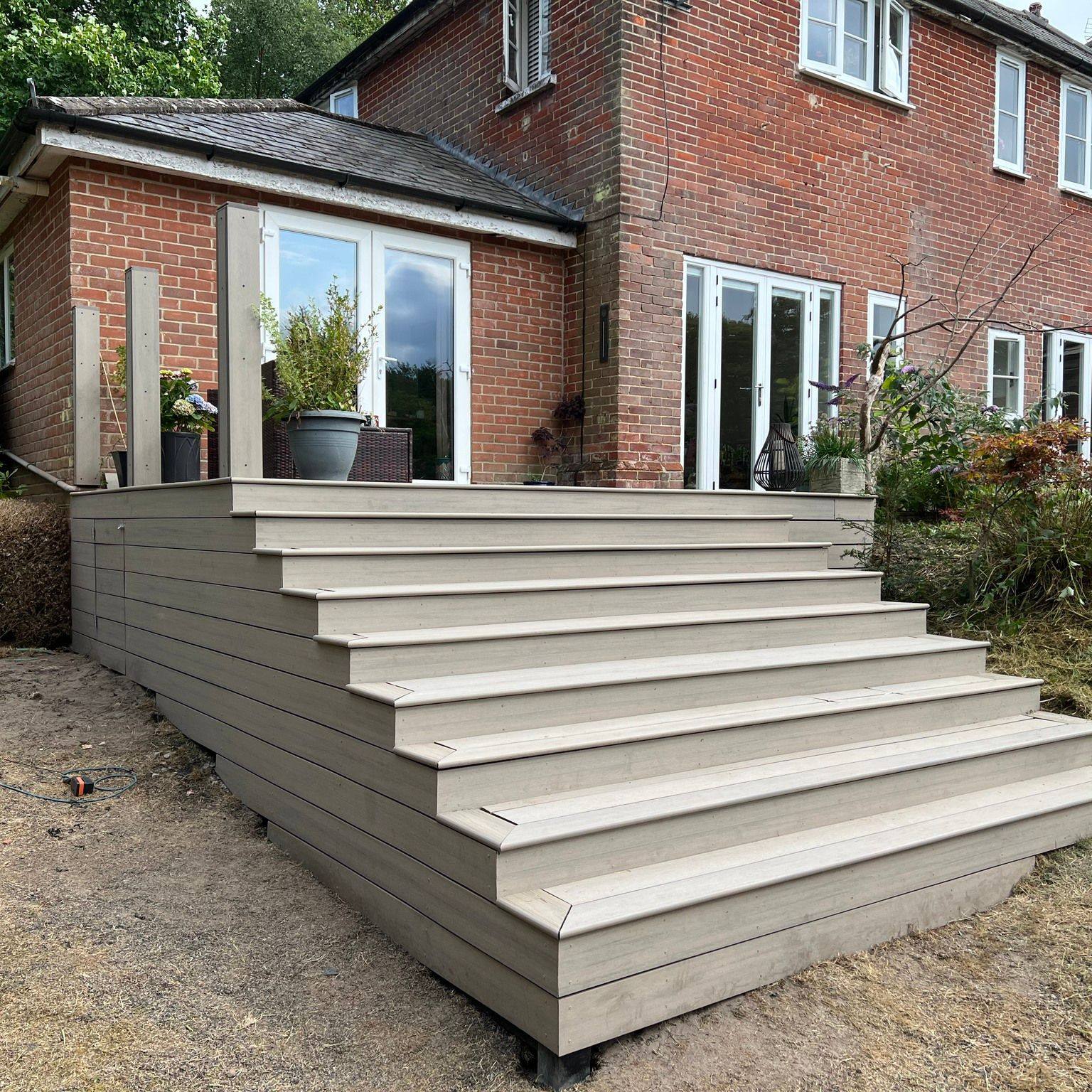
B. Essential Materials:
Besides the composite decking, you’ll need:
- Framing Lumber: Pressure-treated lumber for joists, beams, and posts, ensuring structural integrity and resistance to rot and insect damage.
- Fasteners: Use galvanized or stainless steel screws and nails to prevent rust and corrosion. Consider hidden fasteners for a cleaner look.
- Railing Components: Choose railings that meet local building codes. Materials options include aluminum, steel, or composite railing systems.
- Concrete or Deck Blocks: For the foundation of your deck's posts, providing stability.
- Post Anchors: Secure the posts to the concrete or deck blocks.
- Leveling Materials: For adjusting the height and level of the deck's framing.
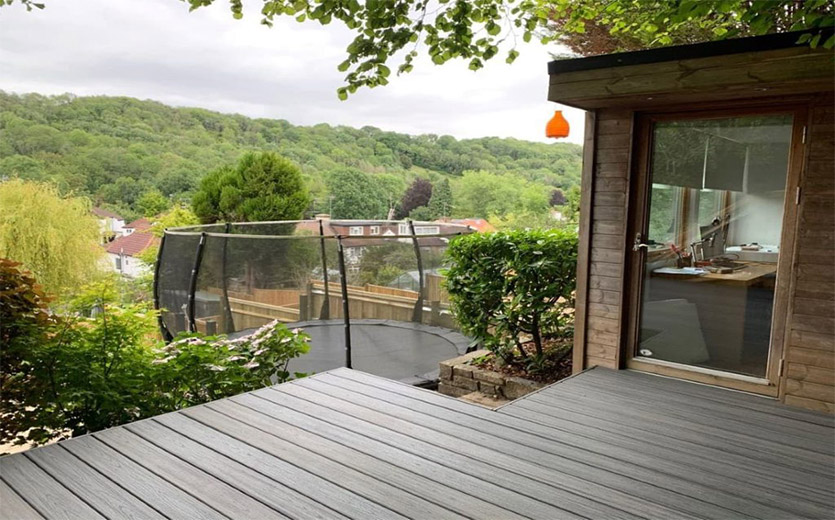
C. Essential Tools:
Having the right tools significantly improves the efficiency and safety of your project.
- Measuring Tools: Tape measure, level, square, chalk line.
- Cutting Tools: Circular saw, miter saw, jig saw.
- Drilling & Fastening Tools: Drill, impact driver, screw gun.
- Other Tools: Post hole digger (if necessary), shovel, safety glasses, gloves.

III. Construction: Building Your Composite Deck
With your plans, materials, and tools in place, you're ready to begin construction. This is a detailed process, and safety should always be your top priority. Consider consulting a professional if you lack experience in construction.
A. Site Preparation:

- Clear the Area: Remove any vegetation, debris, or obstacles from the designated deck area.
- Level the Ground: Ensure a level and stable base for your deck. This might involve excavating or adding fill dirt.
- Mark the Perimeter: Use stakes and string to mark the perimeter of your deck according to your design.
B. Foundation & Framing:
- Post Placement: Dig holes for the deck posts according to the design and local building codes. Set the posts in concrete or use deck blocks for a solid foundation.
- Beam Installation: Attach the beams to the posts, ensuring they are level and properly supported.
- Joist Installation: Attach the joists to the beams, maintaining proper spacing and ensuring a level surface. Utilize joist hangers for secure connections.
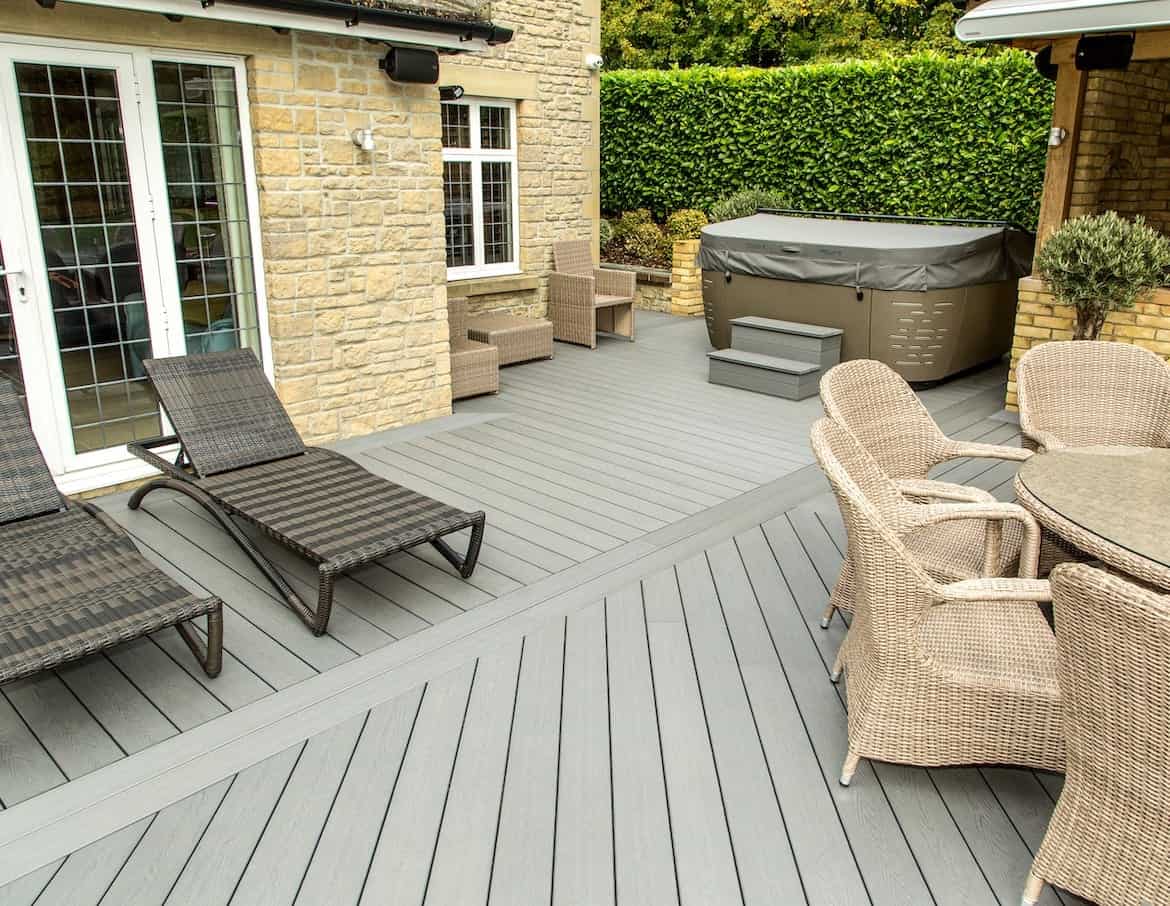
C. Decking Installation:
- Fastening the Decking: Begin installing the composite decking boards, starting from one end and working your way across. Ensure proper spacing between boards for expansion and contraction.
- Cutting & Fitting: Use the appropriate cutting tools to cut boards to fit around corners, curves, or other features.
- Hidden Fasteners: Utilize hidden fasteners for a cleaner, more professional look.
D. Railing Installation:

- Post Installation: Install railing posts at the appropriate intervals, ensuring they meet local building codes.
- Railing Assembly: Attach the railing components to the posts, ensuring secure connections.
E. Finishing Touches:
- Cleaning & Inspection: Thoroughly clean the deck to remove debris and sawdust. Inspect all connections and ensure everything is secure.
- Sealing (if necessary): While composite decking is low-maintenance, some manufacturers recommend sealing the ends of the boards to prevent moisture absorption.
- Finishing Touches: Add any desired features like lighting, built-in seating, or a pergola.

IV. Maintenance & Care: Preserving Your Investment
Composite decking requires less maintenance than traditional wood decking, but proper care ensures its longevity and beauty.
A. Regular Cleaning:

Regular sweeping or brushing removes dirt and debris, preventing build-up and staining. Occasional washing with a mild detergent and water will keep your deck looking its best.
B. Stain & Mildew Removal:
While composite decking is resistant to staining and mildew, occasional cleaning with a mildew remover might be necessary, especially in humid climates.
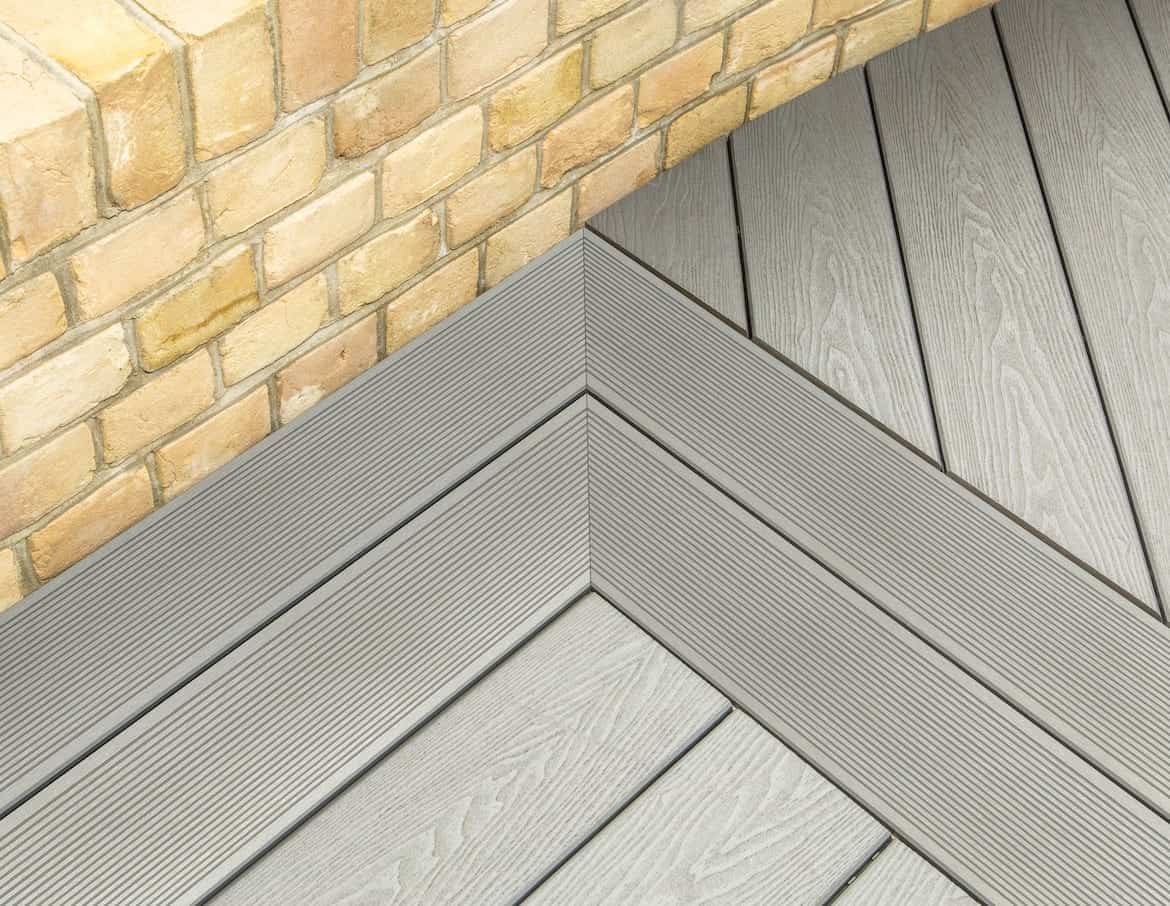
C. Winterizing:
In colder climates, clearing snow and ice promptly prevents damage to the deck's surface and structure.
V. Conclusion: Enjoy Your Outdoor Oasis
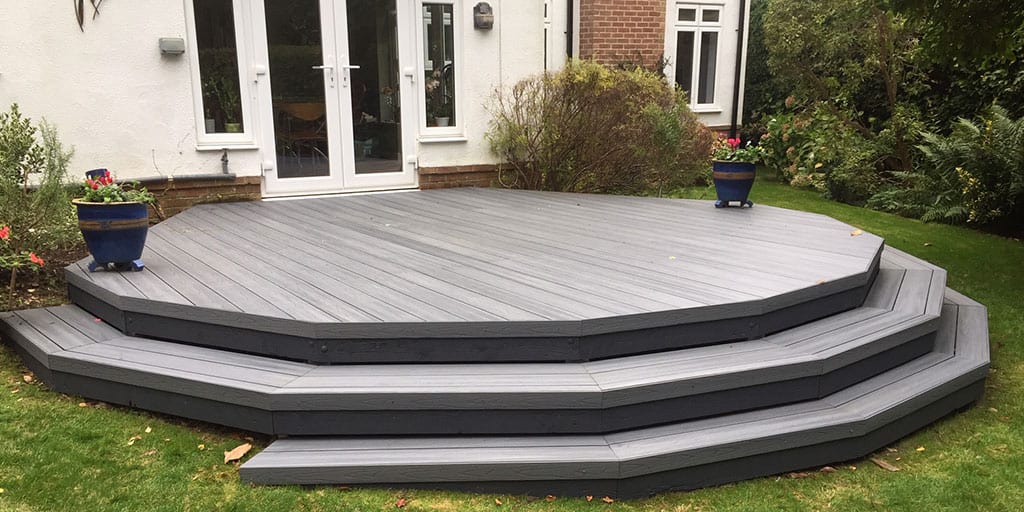
Building a composite deck is a rewarding experience, transforming your backyard into a beautiful and functional outdoor space. By following this step-by-step guide and paying attention to detail, you can create a stunning composite deck that you'll enjoy for years to come. Remember, safety is paramount, and consulting with professionals for certain aspects of the project might be beneficial, especially if you're a novice DIYer. Your composite deck dreams can become a reality with careful planning, quality materials, and a dedication to detail. Now, go forth and build your outdoor oasis!
Composite Decking Dreams: A Step-by-Step Guide
Building a deck is a significant investment, transforming your outdoor space into a usable and enjoyable extension of your home. While traditional wood decks offer a classic look, they require significant ongoing maintenance, battling rot, insect infestation, and the fading effects of the sun. Composite decking offers a compelling alternative, boasting durability, low-maintenance properties, and a wide array of stylish options. This comprehensive guide will walk you through the process of designing and building your dream composite deck, step-by-step.

Phase 1: Planning & Design – Laying the Foundation for Your Dream Deck
Before you even think about grabbing a tool, meticulous planning is crucial. Rushing this phase can lead to costly mistakes and frustrating setbacks later on.
1. Defining Your Needs and Vision:

- Purpose: What will your deck be used for? Entertaining? Relaxing? Dining? A dedicated hot tub area? Understanding the primary function dictates the size, layout, and features required.
- Size and Shape: Consider the available space in your yard. Sketch out different sizes and shapes, keeping in mind building codes and access to your home. A professional architect or designer can assist with complex designs or unique shapes.
- Style and Aesthetics: Composite decking comes in a wide range of colors, textures, and finishes, mimicking the look of natural wood, stone, or even concrete. Browse online catalogs and visit showrooms to choose a style that complements your home's architecture.
- Budget: Composite decking can range in price depending on the brand, quality, and features. Establish a realistic budget early on, factoring in materials, labor (if hiring professionals), permits, and any additional features.
2. Site Assessment and Preparation:
- Ground Conditions: Evaluate the ground where the deck will be built. Is it level? What's the soil composition? Uneven ground will require significant leveling before construction begins. You might need to consult a soil engineer for complex situations.
- Access: Ensure adequate access for materials delivery and construction equipment.
- Utilities: Contact your local utility companies to locate underground lines (gas, electricity, water, sewer) before you dig. Failing to do this can have serious consequences.
- Permits and Regulations: Check with your local building department to determine if you need permits for your deck project and what regulations you must adhere to. These regulations might cover deck height, setbacks, and railing requirements.

3. Choosing Your Composite Decking Materials:
- Type of Composite: Composite decking is generally made from a blend of recycled plastic and wood fibers. Different manufacturers offer varying levels of durability, fade resistance, and moisture resistance. Research different brands and read customer reviews to make an informed choice.
- Color and Texture: Choose a color and texture that complements your home's exterior and landscaping. Consider the long-term impact of sun exposure on the color; some composites fade less than others.
- Board Size and Profile: Different boards offer different aesthetic looks. Some have a grooved surface for a more traditional look, while others have a smooth, contemporary style. Consider the board width and length to determine how many boards you'll need.
- Accessories: Plan for railings, stairs, posts, and other necessary accessories. Ensure these components match your chosen decking material.
Phase 2: Construction – Building Your Composite Deck

This phase requires careful attention to detail and adherence to safety regulations. If you lack experience in construction, hiring a professional contractor is strongly recommended.
1. Foundation and Framing:
- Footings: This is the bedrock of your deck's stability. Properly sized and spaced footings are essential, especially in areas with shifting ground or frost. Concrete footings are typically used for long-term stability.
- Framing: The framing provides the structural support for the decking boards. Use pressure-treated lumber or composite framing materials for durability and resistance to rot. Follow building codes regarding joist spacing and size. Ensure all framing members are level and square.
- Flashing: Proper flashing is critical to prevent water damage. Install flashing around any penetrations in the deck and where the deck meets the house.

2. Decking Installation:
- Fasteners: Use the correct type of fasteners recommended by your decking manufacturer. These are usually hidden fasteners, providing a clean, seamless finish.
- Board Spacing: Leave the appropriate spacing between the decking boards, as recommended by the manufacturer. This allows for expansion and contraction due to temperature changes.
- Cutting and Finishing: Use a specialized saw designed for composite decking to minimize chipping and splintering. Ensure a clean, finished edge on all cuts.
3. Railings and Stairs:

- Railing Height and Spacing: Adhere to local building codes regarding railing height and spacing between balusters. Safety is paramount.
- Stair Construction: Stairs require careful planning and construction to ensure they are safe and comfortable to use. The rise and run of the stairs must meet specific regulations.
- Handrails: Handrails should be securely attached and provide adequate support.
4. Finishing Touches:
- Lighting: Add outdoor lighting for safety and ambiance. Consider pathway lighting, deck lighting, and post cap lighting.
- Landscaping: Integrate your deck with the surrounding landscaping. Add plants, flowers, or other decorative elements to enhance the overall aesthetic.
- Furniture: Choose comfortable and weather-resistant outdoor furniture to complete your outdoor space.

Phase 3: Maintenance – Keeping Your Composite Deck Looking its Best
One of the biggest advantages of composite decking is its low-maintenance nature. However, regular cleaning and occasional maintenance will help prolong its lifespan and keep it looking its best.
1. Regular Cleaning:

- Sweeping: Sweep your deck regularly to remove dirt, leaves, and other debris.
- Washing: Wash your deck with a mild detergent and water, using a soft-bristled brush. Avoid harsh chemicals that could damage the surface.
- Pressure Washing: Pressure washing can be used occasionally, but avoid using too high a pressure, as this could damage the decking boards.
2. Stain and Mildew Removal:
- Stain Removal: Address stains promptly to prevent them from setting. Use a specialized composite deck cleaner.
- Mildew Removal: Mildew can develop in humid climates. Use a mildew remover specifically designed for composite decking.

3. Repairing Minor Damage:
- Scratches and Chips: Minor scratches and chips can often be repaired with a specialized composite deck repair kit.
- Loose Boards: Tighten any loose boards or fasteners. If a board is severely damaged, it may need to be replaced.
Conclusion: Your Composite Decking Oasis Awaits

Building a composite deck is a rewarding project that significantly enhances your home's value and outdoor living space. By following this step-by-step guide and dedicating the necessary time and attention to detail, you can create a stunning and durable deck that will provide years of enjoyment. Remember, safety should always be your top priority, and don't hesitate to seek professional help if needed. With careful planning and execution, your composite decking dreams can become a beautiful reality. Remember to always check local building codes and regulations before starting your project. Happy building!

